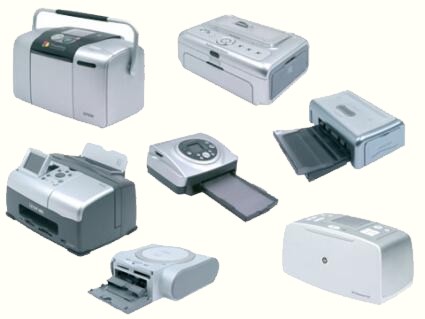4"x6" Printers: Your Own Photo Lab
Introduction

Like many computer users, you may have given yourself a brand-new digital camera for Christmas. And since then you've likely been shooting away at friends, family, and vacation backdrops and now you have hundreds of pictures stored on your hard disk.
There are numerous solutions for turning these images into photos on paper - lab development, interactive kiosks, online development services... and of course, printing them yourself. And there's no shortage of products available for doing exactly that. But while traditional 8½ x 11 or A4 printers are well suited to producing quality prints, many users would prefer a simpler printer dedicated to 4"x6" photographs only.
Fortunately, these printers have been available on the market for years now. They are touted by their manufacturers as being easy to use, with special emphasis on autonomous operation - meaning without having to use the computer. Most of them do have a USB connection, and the computer can come in very handy, especially for retouching. But many users prefer to connect their camera directly via the PictBridge interface, or select and print files stored on a memory card inserted directly into the printer. Most of these units tend to put out very good quality photos; the differences between the various models are generally more in the areas of speed, cost per page, and most importantly, ergonomics.
Two Technologies Represented
Just as 8½ x 11 / A4 printers use two technologies, laser and inkjet, two printing technologies are in competition in the 4"x6" printer market. Here though, they are inkjet and thermal (or dye) sublimation. But where the laser and inkjet markets are relatively compartmentalized in terms of objectives - laser for speed, inkjet for quality - the same isn't true for 4"x6" printers. Whether you choose thermal sublimation or inkjet, the goal is the same: getting the best possible quality and photos that will hold up as long as possible over time.
Except for the Epson PictureMate, the inkjet models use dye as opposed to pigment inks. The latter tend to produce colors that are less brilliant. However, Epson has spent a long time perfecting pigment inks that produce excellent color. Most of them use only the three basic colors (cyan, magenta, and yellow) though black is very useful for improving contrast. The only exception to this rule - which is due to the compact size of 4"x6" printers - is the PictureMate from Epson, which not only uses black but also light cyan and light magenta inks, putting it in a class with photoquality A4 printers.
Inkjet printers produce half tone images by projecting ink droplets of 2 to 4 picoliters on the paper. The droplets are stacked on top of each other to determine color and density. This leads to a resolution of around 5,000 droplets per inch, which produces prints with low grain and pixelation effects.
The thermal sublimation principle is radically different. Rolls of film are used instead of ink. The consumable is in the form of a plastic cartridge which has repeating bands of cyan, magenta, and yellow dye and a transparent layer for protecting the print. The solid dye is vaporized without becoming liquid (sublimation) and transferred to the paper. Color and intensity are based on the degree to which the dye ribbon is heated by the thermal print head. Dye sublimation prints are not composed of individual pixels, rather they are printed in smoother continuous tones that can make the print appear more like a standard photograph. Thermal sublimation printing takes place in four distinct phases. Perhaps surprisingly, this doesn't have a negative impact on printing time - in fact, 4"x6" sublimation printers are generally faster than inkjet ones.
Get Tom's Hardware's best news and in-depth reviews, straight to your inbox.